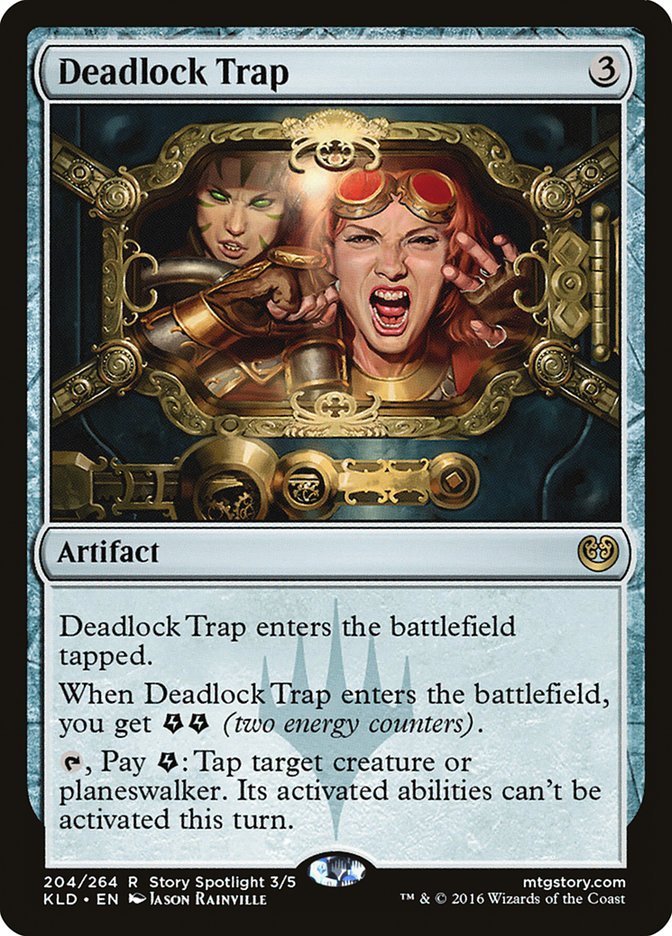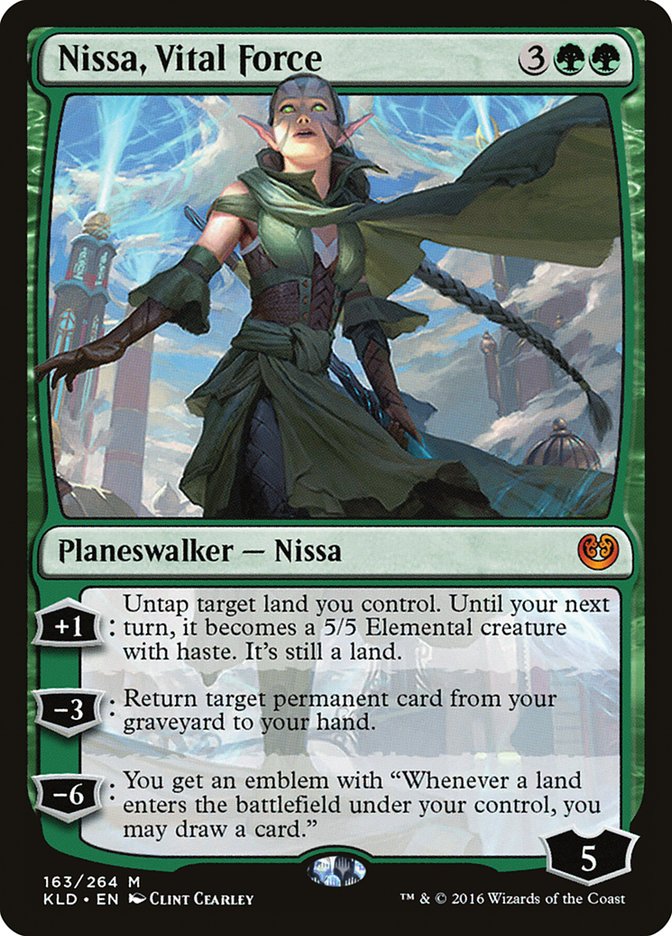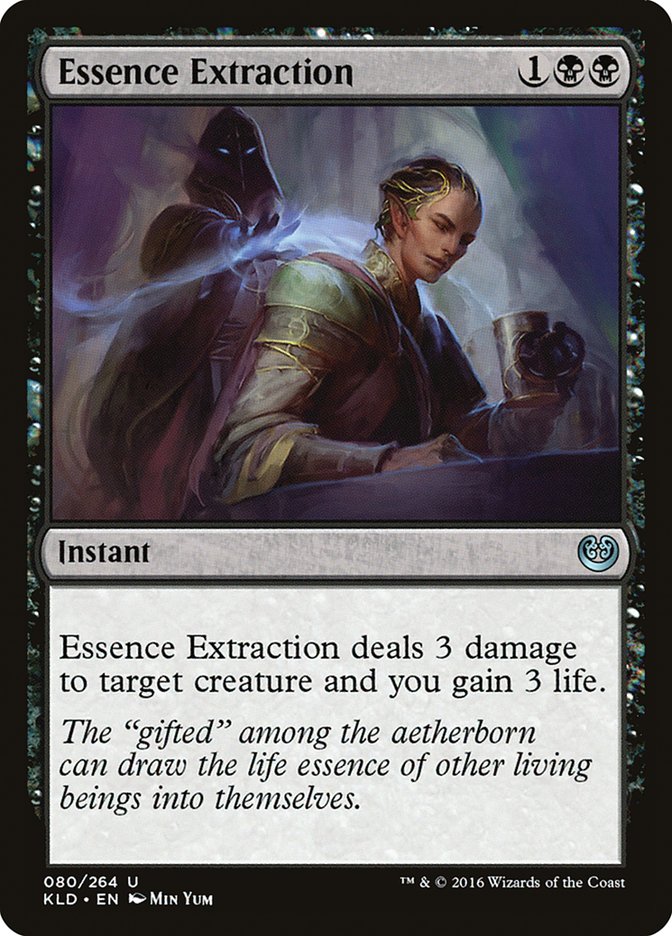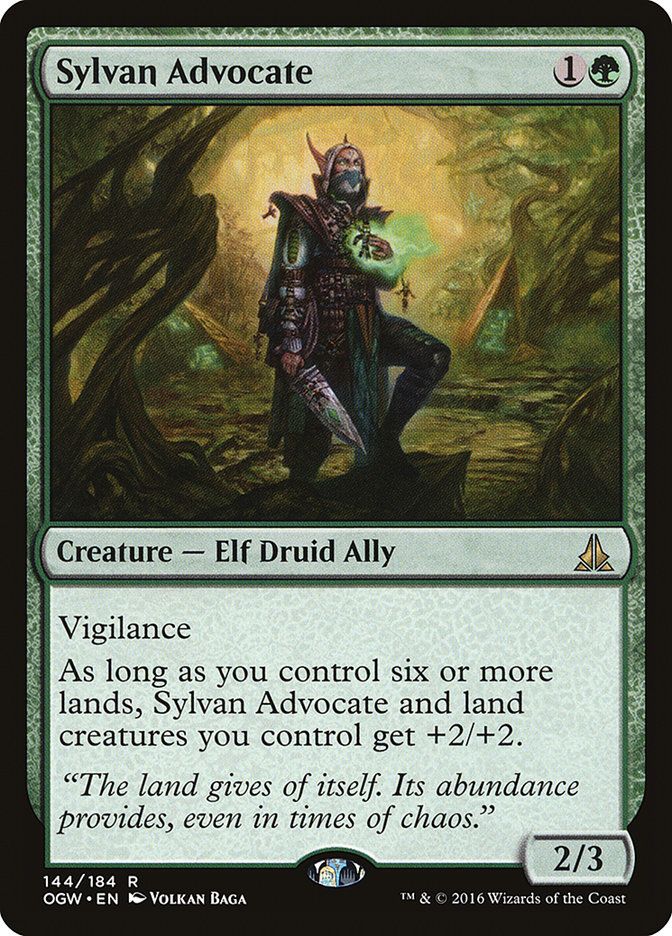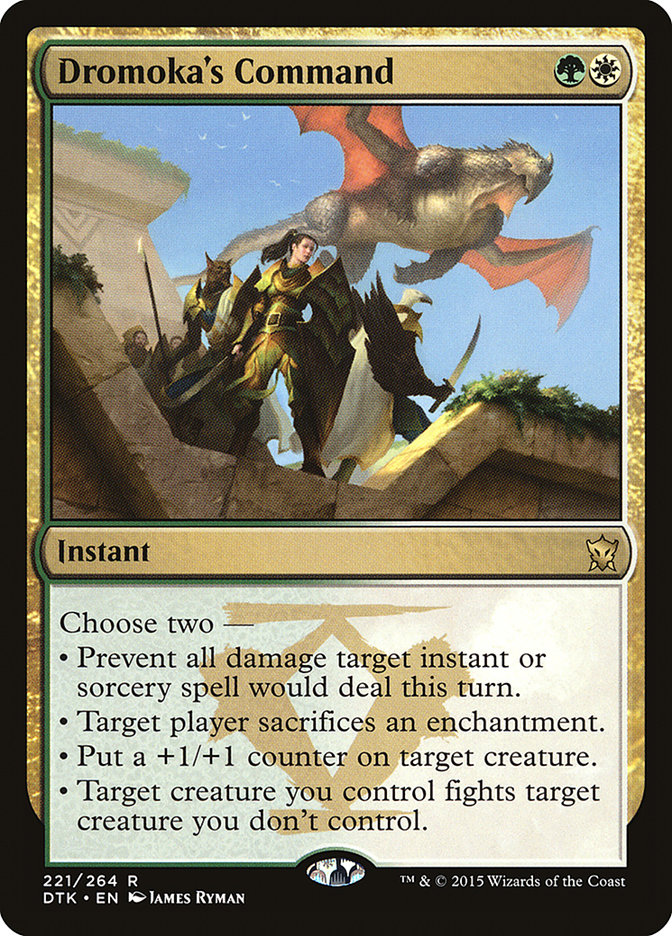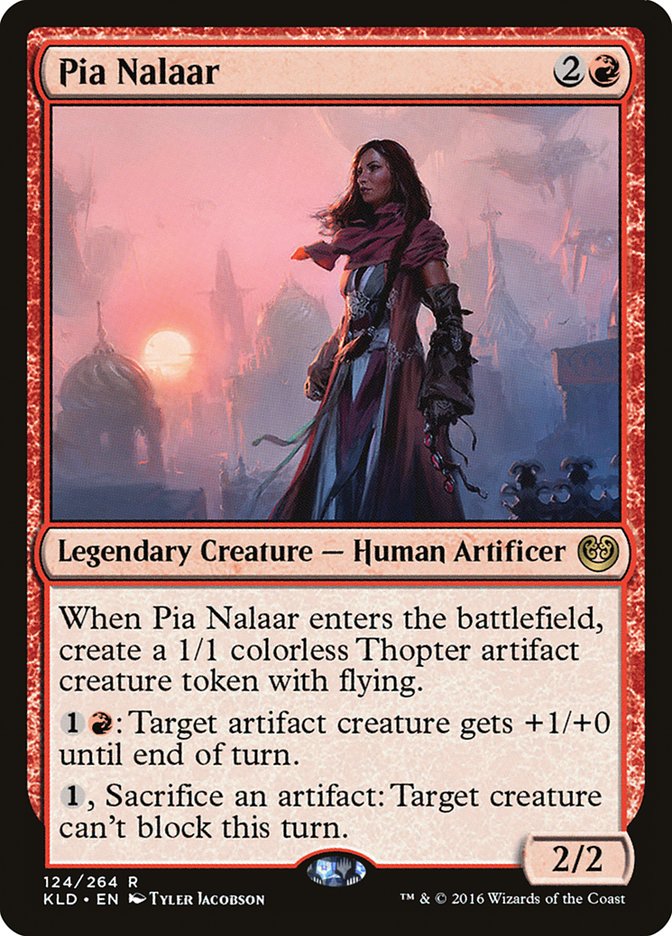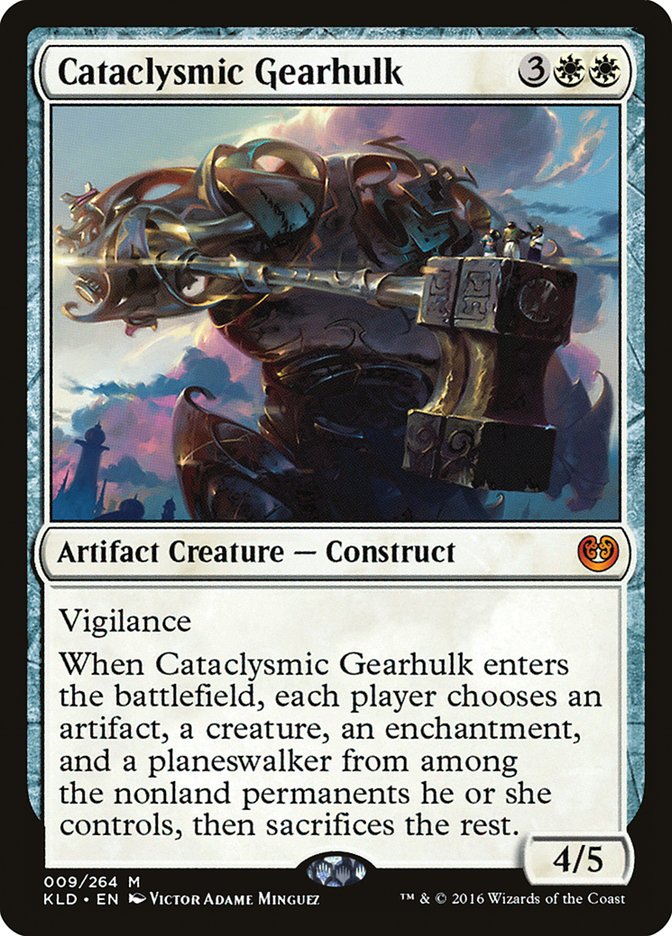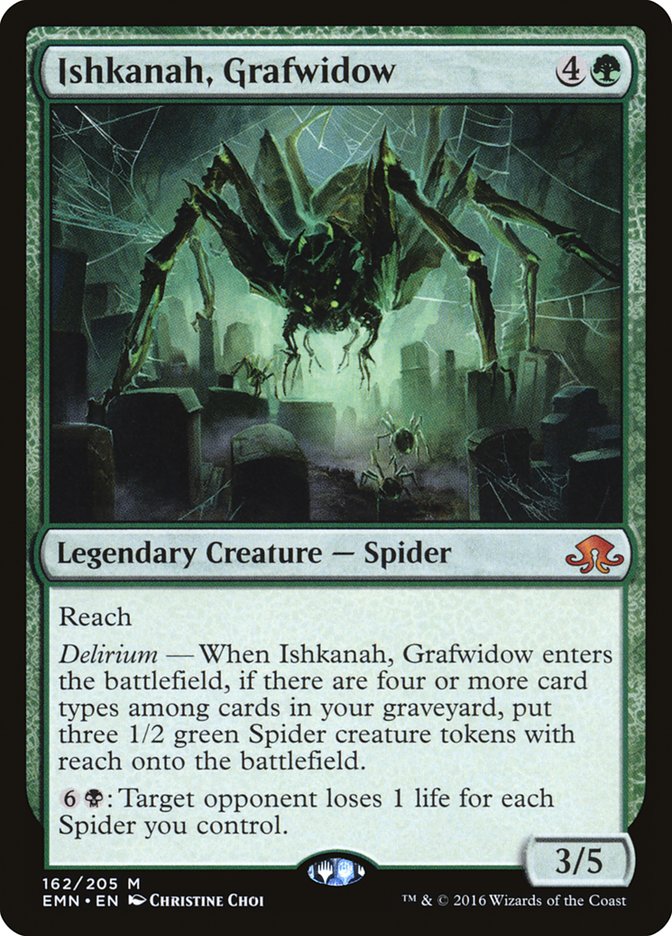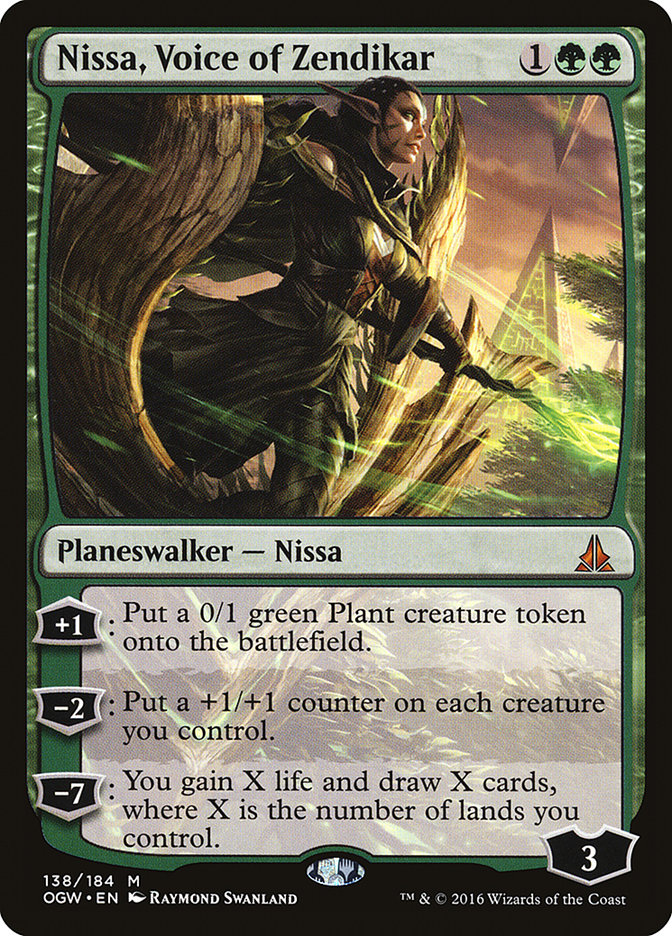The next stop on the SCG Tour® is a mere two days away. Within those two days, many of us will be digging through the past few weeks on content for insight and last-minute ideas, making final adjustments to our new decks and preparing for Week 1 Standard, which is easily one of the best times to be playing Magic. Like many others out there, I’ve been tuned in to all the content about Kaladesh Standard the Internet can provide. From my journey through the aether, I’ve found many differing opinions on specific cards and crazy ideas about how to put them all together. Instead of perpetuating this level of information overload, I thought today we can try to decompress a little and simply talk about what cards I’ve felt have overperformed and underperformed in my initial testing.
Overperformers
Let’s start off with those that have impressed me the most, since they may sculpt exactly why the cards on the other list are there to begin with. We kick things off with the little Copter who could.
I know everyone and their mother are talking about this card, but for good reason! This card has been absolutely bonkers in any deck trying to get on the battlefield with creatures. It may not be able to block right away like most two-drops, but this inability to interact goes both ways. Opponents are not able to use traditional creature removal on this card until you are willing to make it vulnerable to said removal. This puts a damper on many traditional strategies trying to interact on turn 3. Liliana, the Last Hope along with Reflector Mage will have a downtick in playability thanks to Smuggler’s Copter’s built-in protection from these cards.
Now, there are many upsides to playing with this card. The first is how decks can be constructed. On the surface, it’s obvious that this card allows for you to add creatures to your deck that have abilities but lack base stats normally used for combat. Mainly we’ve seen Smuggler Copter get paired alongside cards like Thraben Inspector, Pia Nalaar, and Bomat Courier. These creatures normally aren’t as useful given their weaker bodies, but that’s not relevant when they take to the skies in the Copter.
The inconspicuous benefit this card provides to deckbuilding is the loot ability. Now, we all know this helps smooth out draws and is an easy enabler for Madness cards like Fiery Temper, but there has been little talk about how this ability allows for you to play high-variance one-ofs and get away with it. Normally every card must work cohesively with a deck’s normalized strategy, but that changes with such a great loot effect. Now you can build aggressive strategies with a single Fumigate if you want to. If you’re ahead, you can just discard it, but when behind, you’ll be able to sweep the battlefield. The depth of this deckbuilding adjustment is currently beyond me, but I’m sure we will all slowly figure it out together over the next month and we will start to see how this card has shifted the way we design decks.
I would never consider Kalitas, Traitor of Ghet to be a bad card, but it wasn’t being played too much last season. For whatever reasons, the metagame moved away from it, which made it a slow process for me to once again start building around it. Initial lists had it as a role-player, but eventually it was becoming more of a centerpiece than a decoration.
Kalitas, Traitor of Ghet’s rise in relevancy is thanks to the continued momentum of Temur Emerge. This card causes many issues for the deck’s emerge “fodder” while also being able to grow past Kozilek’s Return. Past that, the card is simply good against aggressive strategies, which will be played in higher numbers moving forward. Last, the card gains life, which will be relevant given the format’s increase in aggression.
I wouldn’t be afraid to play upwards of four Kalitas, Traitor of Ghet right now.
It took me a long time to figure out just what this card’s purpose was. At first I thought it simply passed butter, but upon further inspection I realized this is the perfect way to protect planeswalkers. This was deceiving at first, since the card looks like it is best utilized disrupting them, but that’s just icing on the cake.
I randomly threw this card in a B/W Planeswalker Control deck to utilize all the wasted Energy Live Fast was producing. It was easy to find room since I trimmed down on Liliana, the Last Hope, given how weak she was against Smuggler’s Copter. Now, Deadlock Trap does cause you to take a turn off when casting it, but it makes up for the tempo loss later in the game. This tempo replacement is felt when you tap out for a planeswalker that would normally die to Fleetwheel Cruiser; Nissa, Vital Force; or any other interaction normally associated with the death of a planeswalker.
Deadlock Trap backed up by Fumigate and planeswalkers makes it very difficult for an opponent to navigate a game without being blown out at some point. This artifact makes it that much more devastating when they overcommit into Fumigate in an attempt to kill a potential planeswalker. Not only that, but sometimes an opponent will play something that needs to be dealt with. Now, instead of having to take the time to kill it on the spot, you can ignore it for a turn and continue presenting planeswalkers to gain more and more value out of them.
Last, this card is great at locking down Emrakul, the Promised End. Now B/W Control can easily deal with Emrakul, the Promised End, but not killing it right away lessens the effects brought on by Grapple with the Past recurring it over and over again.
Creatures (5)
Planeswalkers (8)
Lands (27)
Spells (20)

This card is bonkers! I knew it was going to be great, given how similar her +1 was to Nissa, Worldwaker, which I was very familiar with, but I had no idea how much I would actually use her second ability. Almost every time I’ve decided to get something back from my graveyard the turn after I’ve untapped with her. Even her ultimate gets used more often on that turn than her +1. I was prepared to play this card as a planeswalker that threatened other planeswalkers, but now I’m ecstatic to play this card, given the depth of all three of her abilities.
The last card on my list for the overperformers is an innocuous little removal spell that went under my radar until it was time to start building sideboards. Once there, I realized how powerful an effect like Essence Extraction could be. One of the biggest flaws of reactive spells is that the opponent will get some value from a card before it’s killed. Enough micro-interactions like this create the deficit that causes most “controlling” strategies to lose games.
Essence Extraction doesn’t play by these rules and will oftentimes gain back the life lost from the attack a creature got in before being killed. There might have been a negative exchange, like spending more mana on the removal spell than was spent on the creature itself, but gaining the life back makes that trade acceptable.
Underperformers
Number one on my list is everyone’s favorite green two-drop. This card was arguably the most influential card from last Standard, which made it seem obvious that it would continue playing a pivotal role in the format moving forward. It was slotted into every one of my decks playing green, but surprisingly it wasn’t performing well in any of them. It didn’t take long for me to realize exactly why it was doing badly.
Without the ability to get counters and fight early threats, this card quickly became invalidated by most battlefield states. Smuggler’s Copter obviously plays a respectable role in Sylvan Advocate’s decrease in potency, but the format’s increase in speed isn’t doing the card any favors either. Getting to six lands for this card’s boost is constantly feeling much farther away than it did last season, which makes it difficult to keep up with aggressive decks in the early stages of a game.
Now, this doesn’t mean Sylvan Advocate is unplayable, since it holds onto Verdurous Gearhulk’s counters like a champ, but it does mean this card won’t be in as many decks as it previously was. I wouldn’t just throw this card in your deck and expect it to hold the ground like it once did.
I had high hopes for this card. It seemed to be the perfect inclusion in any deck running Vehicles alongside the new Kaladesh creatures that get boosts based on artifact count, but it just hasn’t held its own without those justifications. There rarely is time to activate her abilities, and often I’ve had her swept away in a devastating Kozilek’s Return, which is not what you want out of your three-drop in an aggressive deck.
Now, there isn’t much more you need to ask out of a three-drop that produces two creatures, but playing so many cards with artifact stipulations has caused me to feel that this juice is not worth the squeeze. The cards in decks that justify Pia Nalaar’s inclusion just haven’t felt powerful enough when all the cogs aren’t in unison, making me feel that these are simply bad aggressive decks.
The powerful Tragic Arrogance is still fresh in our memory. This already reminiscent effect has blinded us into believing that Cataclysmic Gearhulk is more powerful than it actually is. In all honesty, I’ve been let down by this card almost every time I’ve seen it in action. The only times it’s overperformed have been against decks that quickly hit the recycling bin.
I’m under the belief that Tragic Arrogance may have been slightly more powerful than Wizards expected, and this effect is more of a “safety valve” than something they want us to constantly be playing with. Truth be told, I hated the dance Tragic Arrogance caused in games of Magic. I was good at it, but disliked it. That said, being able to punish people for going wide is something we should have in Magic, especially when there are so many unique types one can play with while still being proactive. Cards like Tragic Arrogance and Cataclysmic Gearhulk both help punish those trying to do something broken that Wizards may have missed in development. They also make sure formats don’t come down to battlefield stalls that no one can break through.
I’m glad this card exists, but I do not think we need to “break in case of emergency” just yet. I would much rather play Fumigate in the sideboard over this card if you want a global effect.
It’s crazy how much worse this card has gotten thanks to the power level of Kaladesh. The first time I saw Verdurous Gearhulk smash right through the itsy-bitsy Spiders was the last time I thought I would be playing with this eight-legged mythic rare. There’s a new green five-drop and it doesn’t have time for delirium.
Now, Ishkanah, Grafwidow will still see play in Jund and Temur Emerge, given how good it can be at stalling out for Emrakul, the Promised End, but the time it provides has been greatly shortened. It wouldn’t surprise me to find that Temur Emerge becomes obsolete due to Ishkanah, Grafwidow not being able to block long enough for the deck’s engines to get online.
Both of these cards have had a rough road in testing, thanks to Smuggler’s Copter. Not only do these cards have a tough time dealing with opposing Vehicles, but they aren’t efficient at Crewing them either. I really did think these cards would be at war against each other in this format, but neither has performed well enough to justify me sleeving it up. Still, these are powerful cards, which makes me think I am doing something wrong, but until proven otherwise, I will be steering clear of them. I truly believe this Standard format is Smuggler’s Copter’s and we are just playing in it.
Those are all the cards we’re going to talk about today. I’m currently feeling confident in my assessments, but anything can happen this weekend at #SCGINDY to shake things up. I’m still not sure what I’ll be playing, but odds are it will have four Verdurous Gearhulks in it. That hasn’t changed!




